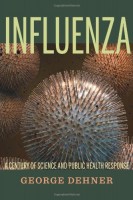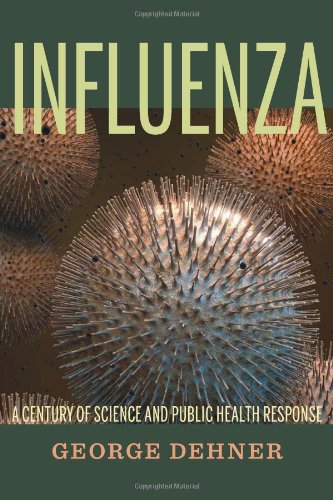 Author: George Dehner
Author: George Dehner
Publisher: University of Pittsburgh Press
Book Review by: Nano Khilnani
There have been several influenza pandemics (epidemics that spread on a global scale) in the past 300 or so years. The most deadly one was the 1918-1920 Spanish flu pandemic in which as many as an estimated 50 million people were infected and killed. No other instance of flu outbreak came even close to killing that many people.
Not to say that other pandemics claimed only a few lives. Every single life is valuable. The 1957-1958 Asian flu killed 1.5 to 2 million people; the Asiatic (Russian) flu of 1889-1890 and the Hong Kong flu of 1968-1969 each claimed about one million lives. On the 1977-1978 Russian flu, no accurate count of the numbers of deaths is available. And the most recent one was the 2009-2010 swine flu in which a little over 18,000 people died.
Over the years, scientific breakthroughs have helped reduce the number of people killed, provided they are vaccinated on time. So there have been instances of success as well, in preventing flu epidemics.
It is probably not a widely-known fact for example, that as many as 42 million people were vaccinated after the outbreak of a new strain of swine flu at Fort Dix, New Jersey in 1976. This massive program to prevent the spread of flu was undertaken by United States health authorities to prevent a pandemic. The World Health Organization however, took no action on its part, but simply adopted a wait-and-see approach.
In this wide-ranging book on many of the challenges that confronted past flu-fighting campaigns, George Dehner looks at influenza outbreaks over 120 years, from the Russian flu of 1889 to the swine flu of 2009, and reveals a wide disparity in national and international responses, such as demonstrated in the example mentioned above.
As travel between countries has rapidly grown to tens of millions of passengers and flights, flu can spread very, very quickly, infecting and killing large numbers of people in a very short time. This is the reason quick response on an international scale is so critical to successfully safeguarding people from this scourge, Dehner emphasizes.
He writes: “In our evolution to a global society, the threat of pandemic devastation looms larger than ever. International response, however, is only as strong as its weakest link – as evidenced in the failed early detection of the 2009 swine flu in Mexico and the delayed reporting of the 2002 SARS outbreak in China.” He calls for “a coordinated early-warning system with full disclosure, shared technologies and robust manufacturing capabilities.” But it is essential that this system be international, he asserts.
A series of positive developments in the fight against influenza epidemics occurred in the early 1970s, Dehner points out. By then, “researchers believed that the tools and techniques of science had cracked the code on the virus and its pandemic spread. And who could doubt their assurance?
“Influenza researchers in the 1970s were inheritors of the scientific revolution, and the scientific revolution had powered so many fantastic breakthroughs and solved so many puzzles that no one could suggest that their faith was misplaced.” He then points out that at the center of this revolution is the critical importance of evidence.
This is an important book on a life-and-death issue – influenza – in which George Dehner provides us its history, along with successes and failures, evidence of what measures in combating it worked and what did not, and recommendations for cooperative global efforts to respond to future outbreaks to minimize casualties. We all must appreciate his valuable contribution to humanity.
More than 50 pages of sources of information are provided in the Notes section and nearly 20 pages of lists of references are presented in the Bibliography, making this a valuable resource for readers who want to learn more about any aspect of the history and spread of influenza and related matters.
George Dehner is associate professor of history at Wichita State University.







